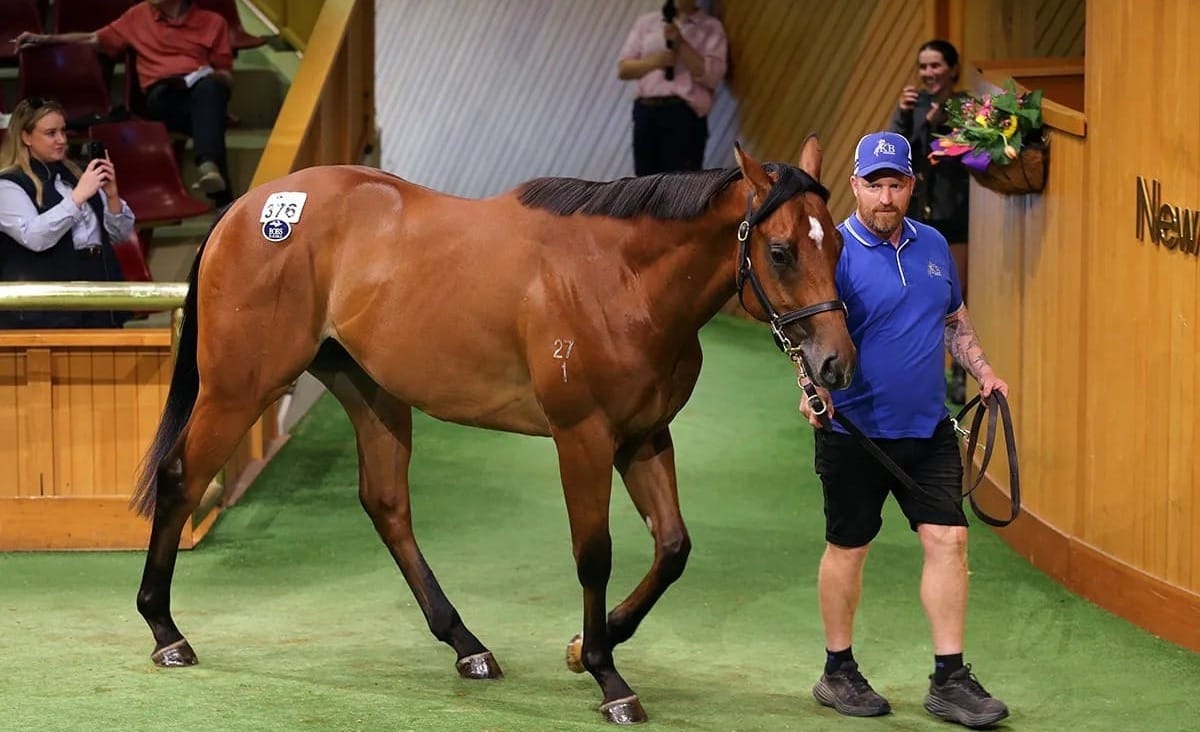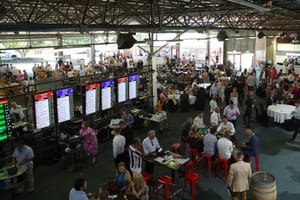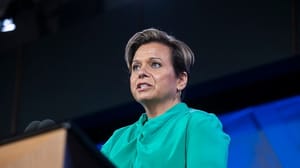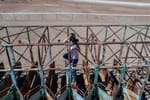In the ever-optimistic bloodstock game, there are very few sales which genuinely exceed expectations, but the recent New Zealand Bloodstock (NZB) Ready To Run Sale bucked the gloomy market forecasts to return record returns.
The average price of NZ$156,031 was a 22.1 per cent increase on the previous record average of 2022, while the total spend exceeded NZ$35 million, nearly NZ$4 million more than the previous highest and a stunning 38.8 per cent higher than it was just 12 months ago.
The buying frenzy at Karaka was fuelled primarily by Hong Kong buyers, who had plenty of orders to fill last week and purchased 69 horses, spending NZ$16.7 million, or 47.2 per cent of the gross. Last year, Hong Kong buyers spent NZ$9.2 million at the same NZB sale, signing for 33 horses.
So in the space of 12 months, the volume of horses purchased by Hong Kongers doubled, while their money spent jumped 82.21 per cent. That more than made up for a drop off in Singaporean buyers, who purchased 24 horses from just shy of NZ$2 million at the same sale last year, but signed for just two horses this year with their industry set to shut down in 2024.
Australian investment at Karaka last week was comparatively steady, with NZ$9.1 million spent across 64 horses this year, compared to NZ$8.1 million across 65 horses in 2022. Even accounting for the slightly inferior New Zealand exchange rate, Aussie buyers spent more money at Karaka last week then they did, combined, at the two Australian two-year-old sales in Sydney and on the Gold Coast over the last month.
Buyers by country at NZB Ready To Run Sale
| Country | 2023 Aggregate | 2023 horses | 2022 Aggregate | 2022 horses |
|---|---|---|---|---|
| Hong Kong | $16,684,000 | 69 | $9,160,000 | 33 |
| Australia | $9,127,500 | 64 | $8,140,000 | 65 |
| New Zealand | $6,708,500 | 61 | $5,037,000 | 54 |
| UK | $3,325,000 | 22 | $0 | 0 |
| Malaysia | $1,280,000 | 11 | $1,044,000 | 17 |
| Korea | $450,000 | 3 | $367,000 | 9 |
| Singapore | $230,000 | 1 | $1,044,000 | 17 |
| China | $280,000 | 2 | $0 | 0 |
| Macau | $0 | 0 | $30,000 | 1 |
It’s a remarkable stat which tells us as much about the success of the New Zealand sale as it does about the depressed state of the Australian two-year-old market at the moment.
The breeze-up market in Australia has always been a difficult one, and there are headwinds, both in terms of international participation and the level of local investment, but the results of this year, with just 192 two-year-olds traded across Inglis and Magic Millions’ sales for $16.4 million, have led to some soul searching from both companies.
While the breeze-up market traditionally only makes up between three to four percent of the public auction bloodstock market in Australia, those two sales, the Inglis Ready 2 Race Sale and the Magic Millions 2YO In Training Sale, are important to the sales companies.
The majority of the horses offered for sale are purchased as yearlings through the same sales rings. Those ‘pinhooks’ are especially valuable as they effectively offer the sales companies two bites at the commission cherry.
The investment of pinhookers and prospective two-year-old vendors is an important primer for the yearling market, especially at the middle and lower end of the price bracket, and a lack of confidence in the strength of the breeze-up market will impact liquidity and investment in the yearling market.
So why did New Zealand Bloodstock fare so well, when it was such hard toil for the Australian sales companies?
Pent-up demand had something to do with it.
The challenges for New Zealand, in terms of international travel, coming out of the Covid pandemic, were more prolonged than in Australia, and the two-year-old market was particularly badly impacted, as it relies so heavily on buyers from Asia.
This year New Zealand Bloodstock rolled out the red carpet for the Hong Kong set and nearly every trainer was on the ground and willing to spend. There were 40 individual Hong Kongers who got on the buyers’ sheet, headed by Yeung Kin Man, known for his ‘Patch’ horses, who signed for a dozen two-year-olds.
The sale also has a great reputation for producing star Hong Kong graduates, notably champion Golden Sixty, Australian-bred and sold through Magic Millions as a yearling but secured by Francis Lui for NZ$300,000 at Karaka in 2017. Multiple Hong Kong Group 1 winner Lucky Sweynesse cost just $90,000 at the 2020 sale, while Beat The Clock is another star graduate of recent times.
But the sale also benefited from considerable enthusiasm from the local buyers. The massive investment of Entain in the New Zealand TAB and the resultant jump in prizemoney for local racing emboldened New Zealand confidence as well.
Table: Breeze-up sale results by year in New Zealand compared to Australia
| Year | Total sold in NZ | Aggregate ($NZ) | Average ($NZ) | Total sold in Aus | Aggregate ($AU) | Average ($AU) |
|---|---|---|---|---|---|---|
| 2023 | 225 | $35,107,000 | $156,031 | 192 | $16,405,000 | $85,443 |
| 2022 | 198 | $25,293,000 | $127,742 | 248 | $23,545,500 | $94,942 |
| 2021 | 185 | $21,380,500 | $115,570 | 201 | $18,201,071 | $90,553 |
| 2020 | 194 | $18,169,500 | $93,657 | 245 | $18,295,000 | $74,673 |
| 2019 | 265 | $23,825,500 | $89,908 | 328 | $21,076,550 | $64,258 |
| 2018 | 258 | $24,647,000 | $95,531 | 255 | $18,575,500 | $72,845 |
| 2017 | 293 | $31,371,000 | $107,068 | 332 | $17,657,300 | $53,185 |
| 2016 | 294 | $28,433,000 | $96,711 | 426 | $22,486,350 | $52,785 |
| 2015 | 260 | $23,569,500 | $90,652 | 332 | $15,850,000 | $47,741 |
| 2014 | 239 | $19,181,500 | $80,257 | 447 | $16,148,425 | $36,126 |
Last year, Kiwi buyers parted with NZ$5.1 million at the Ready To Run Sale, buying 55 horses. In 2023, this jumped to NZ$6.7 million with 61 horses bought.
The excellent result for New Zealand vendors comes off a strong result at the New Zealand Bloodstock National Yearling Sale earlier this year, which recorded its highest gross since 2018, NZ$82 million. The overall investment of NZ$117.1 million across the yearling and two-year-old sales is the third highest in history, behind only 2008 and 2018.
It all points to another bumper week at Karaka in January, but what does it tell us about the Australian yearling market in 2024?
Not a lot really. New Zealand’s two-year-old market has always been much stronger, with around 25 per cent of overall investment on unraced stock in the country coming through the Ready To Run Sale. As mentioned early, in Australia, the equivalent figure is 3-4 per cent.
Even before this year, the average New Zealand breeze-up horse over the past decade cost 76 per cent more than the same profile of horse in Australia.
What tells us more about the Australian yearling market is that Magic Millions have backed their marquee January sale on the Gold Coast in with record number of yearling catalogued, 1468 compared to 1273 last year, while demand is also set to exceed capacity at the Inglis yearling sales.
While confidence in the Australia two-year-old market may have taken a hit, the yearling sales market in Australia has historically been far more robust.






